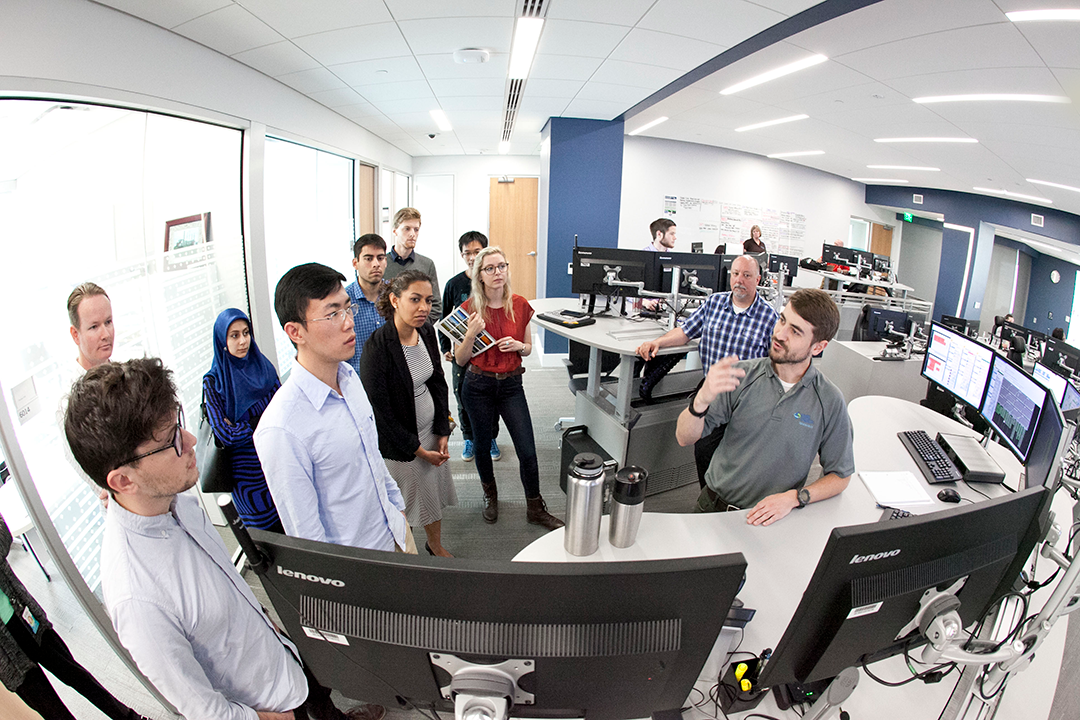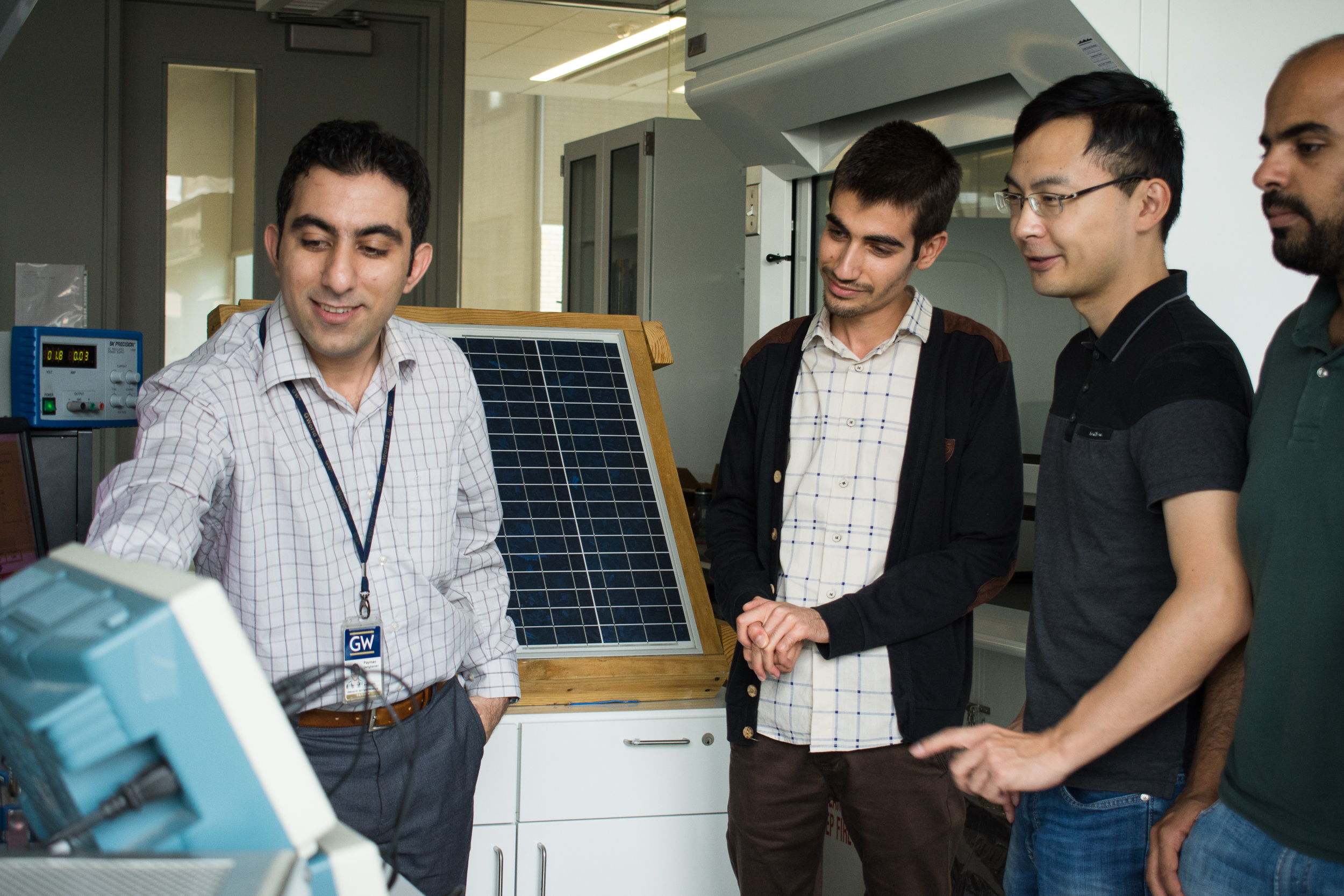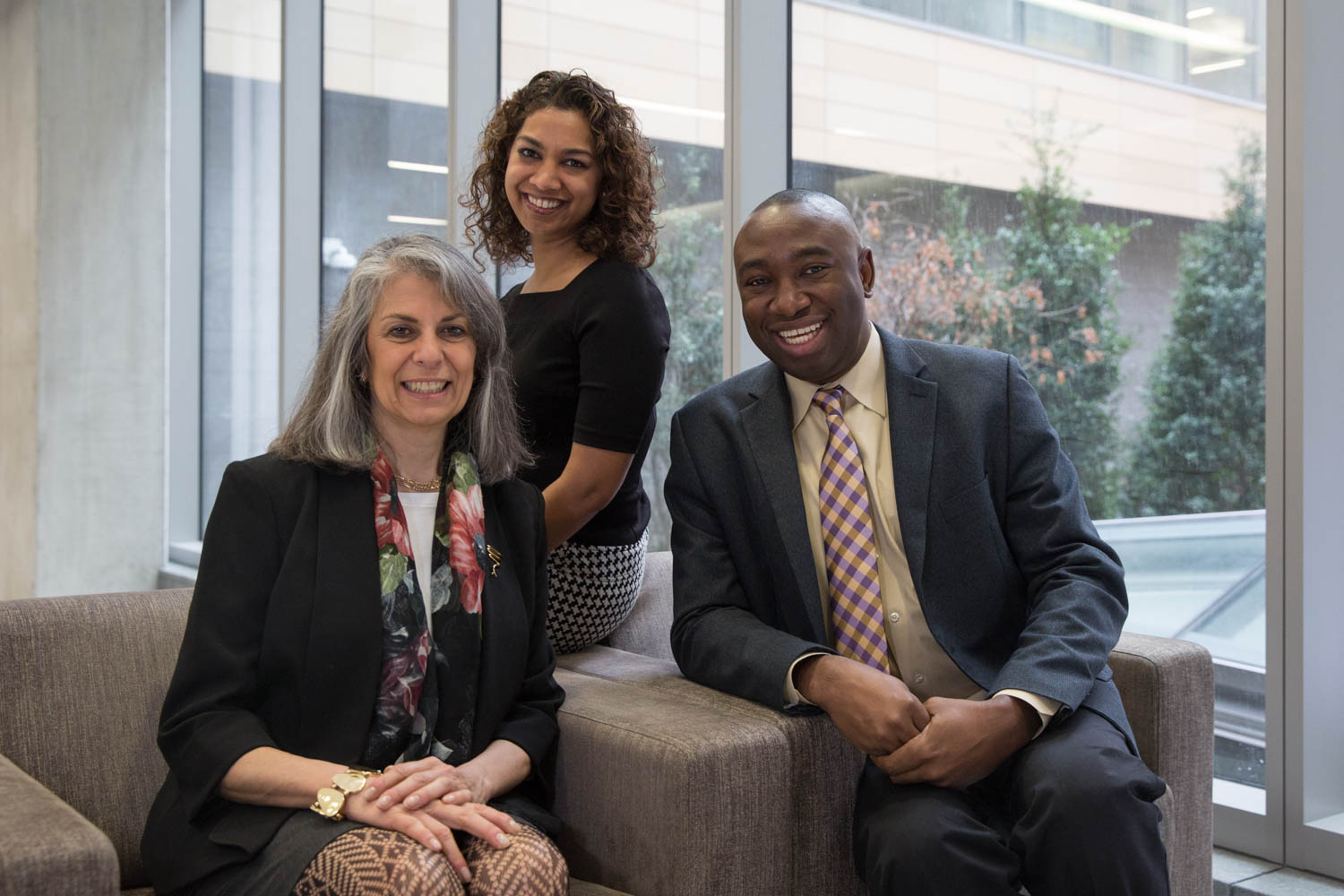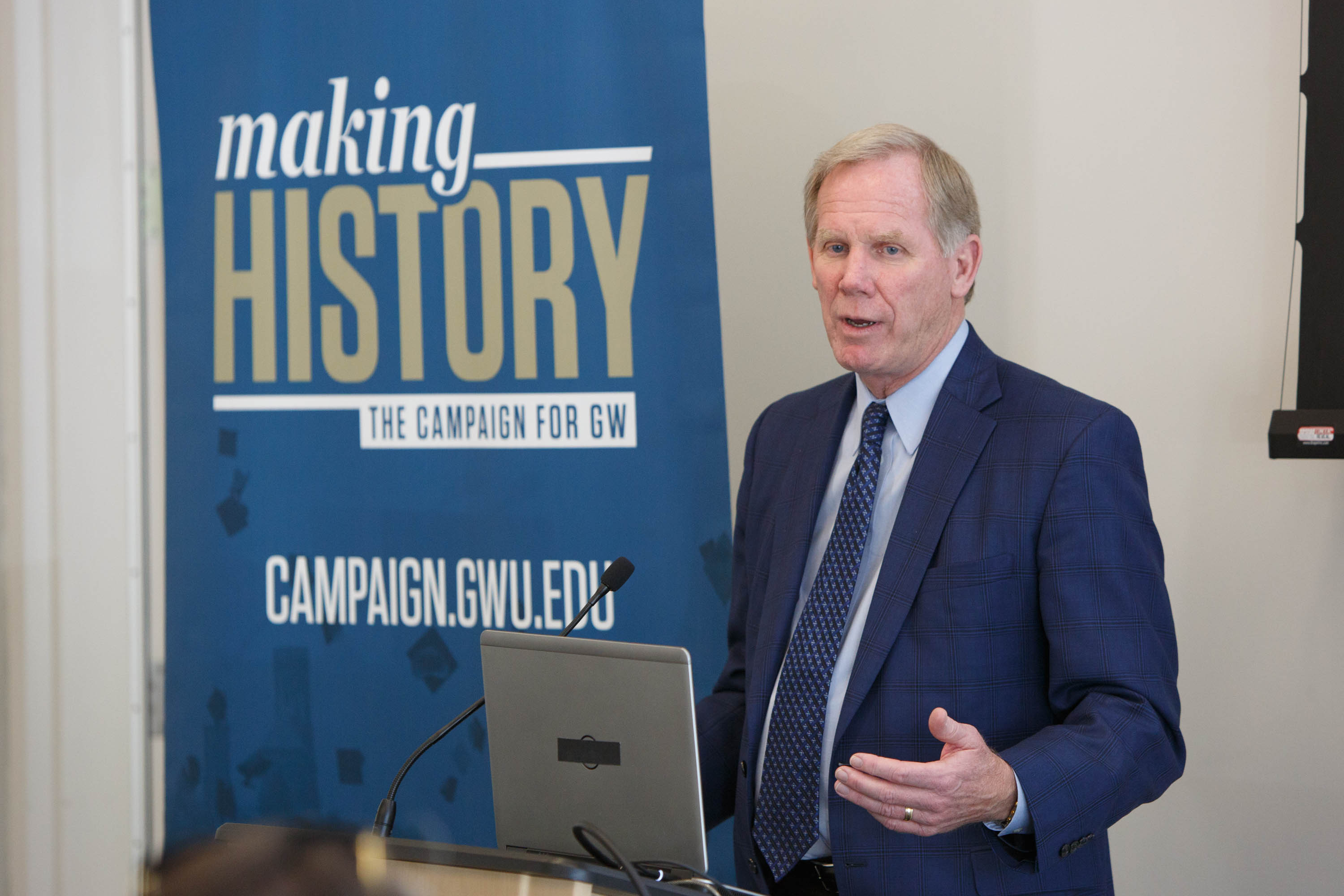By Briahnna Brown
George Washington University’s sustainability team has announced the 2018 winners of the Duke Energy Innovation Fund.
The four teams of GW faculty and researchers received grants for energy research on topics such as electric grids and creating opportunity for students interested in energy-related careers.
Established in 2015 with seed funding from Duke Energy Renewables (DER), the Duke Energy Innovation Fund provides competitive grants to interdisciplinary GW faculty teams for energy-related research. Sustainable GW – a partnership between the Office of Sustainability and the Office of the Provost--runs the annual competition, and a GW-DER team selects award winners.
"Now more than ever we need to identify innovative ways of sustainably meeting energy needs,” said Rob Caldwell, president of DER and Distributed Energy Technology. “We continue to be extremely impressed with the breakthrough work being done by the teams who have received Duke Energy Innovation Fund awards."
Part of GW’s partnership with DER includes the Capital Partners Solar Project—a partnership among GW, American University, GW Hospital and Duke Energy Renewables that plays a major role in reducing the university’s carbon footprint. GW offset 50 percent of its electricity needs this year by sourcing solar power from the DER solar farms, explained Meghan Chapple, director of the Office of Sustainability.
This partnership is a demonstration of GW’s ongoing commitment to fostering excellence in sustainability and sustainability research that has a positive impact on the planet, she added.
Bob Orttung, research director for Sustainable GW, said that the DER fund facilitates interdisciplinary research at the university. “The Duke Energy Innovation Fund gives GW faculty incentives to reach out to scholars working in other fields and explore ways of combining their knowledge in efforts that help to solve real-world problems," he said.
Last year’s grand prize-winning team, Stuart Licht, a chemistry professor in the Columbian College of Arts and Sciences, and Peter LaPuma, associate professor of environmental and occupational health at the Milken Institute School of Public Health, developed a method to turn carbon dioxide into a lightweight replacement for steel and cement composite.
The $85,000 funding Dr. Licht received from the Duke Energy Innovation Award allowed him to continue his research, and he and his team are now finalists in the Carbon XPrize competition.
“There is no question that the solutions to our environmental challenges need to be based upon high quality research,” Provost Forrest Maltzman said. “They need to cross disciplinary boundaries and can not be based solely on regulatory solutions.
“I am grateful that Duke Energy has created this Innovation Fund to help our faculty and students continue to promulgate solutions to one of the most important challenges that exist.”

Professor Saniya LeBlanc (c, in black) with students at Duke Energy Renewables' headquarters in Charlotte, NC where they learned about careers in the energy sector. (Courtesy photo)
This year’s winners will build on the work of previous awards. Here are capsules of the 2018 award winners:
“Energy Fellows Program: Living Lab to Train Students for Careers in the Energy Sector”
Saniya LeBlanc, assistant professor of engineering and applied science, SEAS
Russell Korte, associate professor of human and organizational learning, GSEHD
This project plans to create a pipeline for students interested in energy careers and provide a qualified workforce to this growing industry. To expose these students to energy topics, professional development and connections to energy jobs, Dr. LeBlanc and Dr. Korte will create the immersive Energy Fellows Program where students will engage in energy-related living labs.
Dr. LeBlanc said that the experience students gain from the Energy Fellows Program will allow them to develop the skills necessary for their chosen career paths.
“We designed the program to provide students with an opportunity to take what they learn in class and use it to do real-world energy projects,” Dr. LeBlanc said. “There is a significant demand for graduates trained for the energy field, especially since many professionals in the energy sector are retiring.”
“Preparing to Turn Disasters into Opportunities for a Smarter Electric Grid”
Donna Attanasio, senior advisor for energy law programs, GW Law
Lee Paddock, associate dean for environmental law studies, GW Law
Scott Sklar, president of the Stella Group
By creating a thorough report, this project aims to encourage “smart rebuilds,” which occur when regions that suffer significant loss of electric infrastructure after a natural disaster rebuild a more environmentally sustainable grid in its place.
The report will examine what factors lead to smart rebuilds and what impedes them, and the primary investigators hope it will identify ways that these disasters can result in more environmentally-friendly electric grids when the opportunity arises.
Ms. Attanasio said the grant will give students the chance to study human, environmental and infrastructural impacts of severe weather events so they can get involved in creating long-term solutions.
"It's critical to human welfare to restore an electric grid as quickly as possible after a disaster, but it's better in the long run to replace it with a modern grid,” said Ms. Attanasio. “So, we're looking at advance measures that can be taken so that re-construction of the grid after a disaster can result in a faster, more modern grid."
“Evaluating the Ecosystem of Microgrids in the Arctic and Developing Countries”
Ekundayo Shittu, assistant professor of engineering and systems engineering, SEAS
Dmitry Streletskiy, associate professor of geography and assistant professor of international affairs, CCAS and ESIA
The primary investigators on this project aim to discover the investment feasibility of microgrids—local energy grids that can operate autonomously—to expand access to electricity in environments such as the Arctic and developing countries that lack access. The report resulting from this project will examine the successful implementations of microgrids in similar environments and outline strategies for installing microgrids in others.
“Approximately 1.2 billion people worldwide lack access to electricity, and that is 16 percent of the global population,” Dr. Shittu said. “My research is to examine how the un-electrified population can be best supplied with electricity through decentralized solutions such as microgrids in ways that are socio-economically viable.”
More than half of the total population without access to electricity lives in Sub-Saharan Africa, Dr. Shittu said. This project, he said, will contribute to a new joint initiative between the World Bank and the International Finance Corporation called "Lighting Africa." The initiative will be a consumer education campaign aimed at raising awareness about the benefits of modern, quality solar off-grid lighting while helping communities make informed purchasing decisions.
“Power Grid Resilience to Extreme Weather Conditions: Unlocking the Full Potential of Grid-Scale PV Generation and Battery Storage”
Payman Dehghanian, assistant professor of electrical power and energy, SEAS
Emre Barut, assistant professor of statistics, CCAS
Primary investigators on this project will develop an in-depth proposal on methods to improve the resilience of power grids to help them better withstand outages from extreme weather conditions.
Loss of power incurs hundreds of billions of dollars in annual costs in the United States, Dr. Dehghanian said, and a more resilient electricity grid would potentially reduce undesirable social, psychological and physical outcomes associated with prolonged power outages.
“Safeguarding the nation’s electric power grid and ensuring a continuous, reliable and affordable supply of energy is among the top priorities for the electric power industry,” Dr. Dehghanian said. “The resilience of the energy delivery infrastructure and its capacity to withstand unexpected extreme events has become more and more critical to people’s well-being and to every aspect of our economy.”




